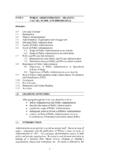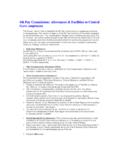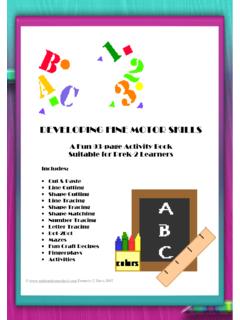Transcription of All about Butterflies and their Life cycletheir Life cycle
1 All about All about All about All about Butterflies and Butterflies and Butterflies and Butterflies and their life cycletheir life cycletheir life cycletheir life cycle A fifth grade unit on Butterflies Subject Rationale Curriculum Area: Science Topic: Lifecycle of a Butterfly Grade Level: Fifth Grade This is a unit on the lifecycle of a butterfly. In this unit students will analyze the stages of the butterfly starting from the egg and ending in adulthood. The unit begins by presenting basic knowledge and vocabulary pertaining to Butterflies . Using this knowledge students will be learning concepts in Mathematics, English Language Arts, Social Studies, along with the main focus in Science.
2 During the unit students will learn that all living things have a life span. They will also learn many of the parts of a butterfly. This will help them understand not only the life cycle of a butterfly but also show them that all living things both big and small have complex systems within their bodies. Along with learning about the lifecycle of a butterfly students will also learn about their living habits such as their migration patterns. This unit covers many of the New York State Learning Standards for each subject addressed. Standards covered in this unit starting with science, address the living environment in various ways. Through use of the scientific method, content taught in class, and various activities the science standards will be met.
3 The science standard states: Students will: understand and apply scientific concepts, principles, and theories pertaining to the physical setting and living environment and recognize the historical development of ideas in science under key idea 4 of the living environment: the continuity of life is sustained through reproduction and development. The performance indicator for this idea is that students will learn to describe the stages of life cycles of various animals. Students will also be growing Butterflies and observing changes in their development. The ELA standards are met through the students work when we address sentence structures and parts such as nouns and adjectives. Haiku poetry will be used to allow for students to express their thoughts of Butterflies through writing.
4 They will read aloud their haikus along with stories about Butterflies to fulfill the reading component. Through social interaction students will be working on the unit project, which involves growing the butterfly garden. Math standards are met through the use of problem solving and communication of how they solved the problems. Graphing and probability will be used to keep track of the colors of Butterflies from the garden as well as Butterflies discussed in class. Measurement of wingspan and computations involving butterfly parts are also covered. The geography standard for Butterflies is met when students learn about their migration patterns and where they are found in the world. Technology and art are also addressed in this unit.
5 Students will use web quests and will be asked to create 3-dimensional pictures of Butterflies during the unit. Although students may feel that the study of the butterfly life cycle is not important they will see that it can be identified with the world around them everyday in that every organism has a lifespan. By learning the life cycle of a butterfly the students learn that life takes place in stages. We start out as infants, develop into children, mature into adolescents, and then adults, similar to that of the butterfly s life cycle . Learning about the life cycles of animals helps students to better understand that living things develop and change from birth until death. Learning about the lifecycle of a butterfly also teaches students the theory of evolution.
6 In the case of Butterflies the caterpillar evolves into a butterfly after going into its chrysalis. In this aspect the evolution of a butterfly from a caterpillar is similar to that of infants developing into adults after undergoing other stages. In the study of human evolution it is said that we evolved from apes which would show that Butterflies evolving connected to our meaningful learning rather than just being another science topic. The significance is being able to see the progression from caterpillars to Butterflies whereas we will not see the progression from apes to humans. Studying the life cycles of Butterflies also shows children that all living things big and small are important to the world we live in. Children today deal with many things in the world so the importance of nature and how things live are not always taught in a way to make them see that even studying Butterflies can be connected with their daily routines.
7 Butterflies must learn to feed themselves and protect themselves from predators just as children learn from their parents about becoming independent and running from danger. Studying small animals such as insects like Butterflies also shows students to appreciate the small things in life . Too often today students are rushed to learn content for a test and they do not have a chance to learn about the beauty in the world. This is perhaps why as a world we are becoming less and less appreciative of what we have and more in a rush to just do what must be done. Subject Matter Outline Subject Matter Outline I. Statement of topic: The Lifecycle of a Butterfly Unit for fifth grade class II. Definition of important terms A. Metamorphosis- 1.
8 A change of form 2. a typically marked and more or less abrupt developmental change in the form or structure of an animal (as a butterfly or a frog) occurring subsequent to birth or hatching 3. a striking alteration in appearance, character, or circumstances B. Butterflies 1. characterized by clubbed antennae, a slender body, and large, broad, often conspicuously marked wings. 2. Most have four wings that are brightly colored or have scary spots they use to camouflage themselves when an enemy is present 3. Butterflies stop and rest on trees with their wings closed to help camouflage while resting 4. Butterflies belong to the order Lepidoptera C. Lifespan -the length of time from an animal s birth to its death D. life cycle -the series of stages in form and functional activity through which an organism passes between successive recurrences of a specified primary stage III.
9 Classification of Butterflies 1. There are 28,000 species of Butterflies world wide 2. They are most closely related to the moth. 3. Some Butterflies are monarchs, sulphurs, or swallowtails IV. Stages of the butterfly A. Egg 1. The first stage of the butterfly s life cycle 2. The eggs are laid on a leaf by the female 3. A tiny wormlike creature will hatch in about five days B. Larva 1. The larva or caterpillar hatches from the egg. 2. The caterpillar begins to eat leaves and flowers immediately 3. The caterpillar or larva will molt or lose its skin as it grows 4. The caterpillar molts four or five times as the exoskeleton becomes tight. 5. This stage last from two weeks to a month 6. When the larval stage is ending the caterpillar will empty its digestive system and look for a resting place C.
10 Pupa 1. This is the complete metamorphosis of the larva into the butterfly 2. The caterpillar finds a safe resting place and forms its chrysalis 3. Chrysalis is larva encasement usually made from a silk pad and abdominal hooks 4. Some pupa stages last a few days others last for months through the winter 5. A day before some Butterflies such as the monarch emerges the chrysalis becomes transparent or see through D. Adult 1. When the butterfly emerges its wings are usually wrinkled 2. The butterfly comes out of the chrysalis at full size 3. The butterfly can only eat liquids such as nectar through a straw like proboscis 4. The adult butterfly s task is to mate and reproduce 5. They find a mate by visual cues such as wing color 6.










